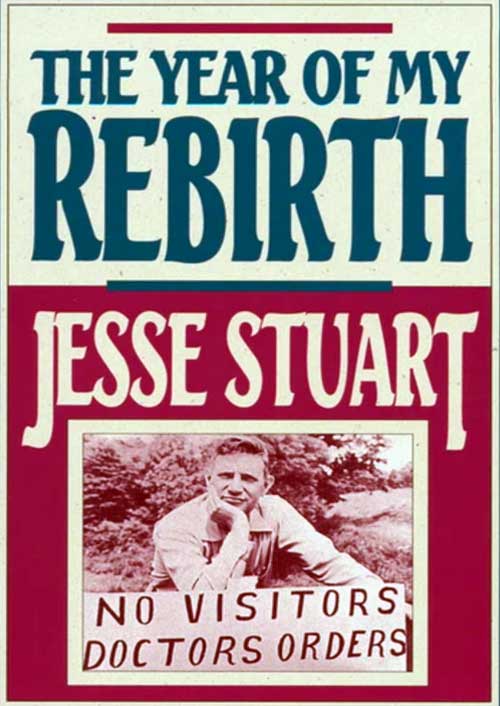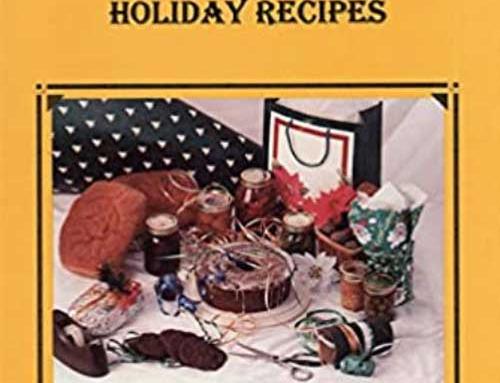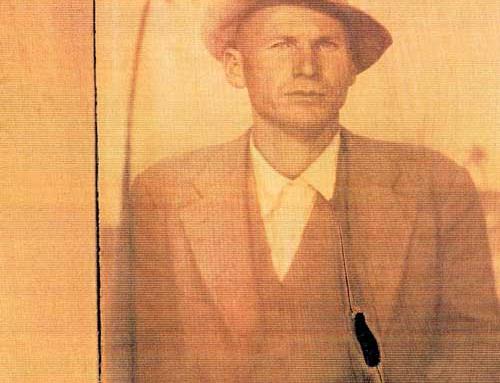In his 1956 autobiography, “The Year of My Rebirth,” Jesse Stuart makes brief mention of the mid-nineteenth century murder of “Nick” Nickapopolis, a pack peddler who worked W-Hollow on a monthly basis in the 1850s. Little is known of “Nick”—the people of W-Hollow did not even know his first name so they called him Nick.
 Nick was one of several peddlers who visited W-Hollow, and he became a monthly regular for many years, normally spending about two days per month walking through the hollow and visiting each home. Adults liked and respected Nick, and little children remembered him fondly because he always had a piece of candy or a stick of gum for them. Standard procedure for Nick was to walk from home to home and, as darkness fell, spend the night with someone in W-Hollow. He was a welcome guest because of his cheerful personality and his stories of the “old country” and the hundreds of places he had visited in America.
Nick was one of several peddlers who visited W-Hollow, and he became a monthly regular for many years, normally spending about two days per month walking through the hollow and visiting each home. Adults liked and respected Nick, and little children remembered him fondly because he always had a piece of candy or a stick of gum for them. Standard procedure for Nick was to walk from home to home and, as darkness fell, spend the night with someone in W-Hollow. He was a welcome guest because of his cheerful personality and his stories of the “old country” and the hundreds of places he had visited in America.
Then, one month, Nick did not visit the homes in W-Hollow, and he did not come the following month, either. People “began to suspect foul play,” remembered Jesse Stuart’s brother James, because Nick often carried “a substantial amount of money” along with his wares. Months passed and one evening Mitchell Stuart, Jesse Stuart’s father, was walking home when he “saw a light hovering over the well” near the road into W-Hollow. When he approached the well, the light disappeared into the well. When he told that story at home, his wife, Martha Hylton Stuart, suggested that he might have had too much to drink before starting home.
Then much to her surprise and dismay, Martha saw the same light when she was walking home from the Little Mary Baptist Church one evening. As time passed, several other residents of W-Hollow saw it, too. One Stuart neighbor called it “an omen” that required action or else the people and animals of W-Hollow might suffer dire consequences. Consequently, one evening four men gathered and saw the light dip into the darkness of the well. One summoned the courage to look into the well and saw a man’s boot sticking out of the well water. Using a ladder and a rope, the four men pulled a man’s body from the well and easily identified it as the remains of the old pack peddler. Nick’s skull had been fractured and there were still some pieces of wood embedded in his skull. A local minister would later preach a “decent funeral for a decent man” and old Nick was buried in W-Hollow.
No one was ever convicted of the murder, although there was a local suspect who showed surprising prosperity for a while, strutting around in new clothes and buying drinks for his friends at a Greenup saloon.
After Nick was buried, the light over what came to be called Peddler’s Well was never seen again. The same men that rescued Nick’s body cleaned the well and scalded and washed the sides, but no one was willing to drink from the well again. Finally the people of W-Hollow filled in the well. Now all that remains is the legend of Peddler’s Well.
Stuart’s episode concludes that “the great tall tales of this place have flown with the winds of yesterday” and suggests “our imaginations aren’t what they used to be” (See “The Year of My Rebirth,” pp 206-209.). Stuart’s conclusion to this episode reinforces a belief by most current scholars that his retelling of the story is an exaggeration, but no one knows for sure if it is the exaggeration of a fact or a fanciful ghost story that grew into a legend.
For more stories about murders, mysteries, and ghosts in Appalachia, contact the Jesse Stuart Foundation Bookstore & Gift Shop in Ashland at 606-326-1667 or email jsf@jsfbooks.com.
James M. Gifford, Ph.D.
CEO & Senior Editor
Jesse Stuart Foundation
In his 1956 autobiography, “The Year of My Rebirth,” Jesse Stuart makes brief mention of the mid-nineteenth century murder of “Nick” Nickapopolis, a pack peddler who worked W-Hollow on a monthly basis in the 1850s. Little is known of “Nick”—the people of W-Hollow did not even know his first name so they called him Nick.
Nick was one of several peddlers who visited W-Hollow, and he became a monthly regular for many years, normally spending about two days per month walking through the hollow and visiting each home. Adults liked and respected Nick, and little children remembered him fondly because he always had a piece of candy or a stick of gum for them. Standard procedure for Nick was to walk from home to home and, as darkness fell, spend the night with someone in W-Hollow. He was a welcome guest because of his cheerful personality and his stories of the “old country” and the hundreds of places he had visited in America.

Then, one month, Nick did not visit the homes in W-Hollow, and he did not come the following month, either. People “began to suspect foul play,” remembered Jesse Stuart’s brother James, because Nick often carried “a substantial amount of money” along with his wares. Months passed and one evening Mitchell Stuart, Jesse Stuart’s father, was walking home when he “saw a light hovering over the well” near the road into W-Hollow. When he approached the well, the light disappeared into the well. When he told that story at home, his wife, Martha Hylton Stuart, suggested that he might have had too much to drink before starting home.
Then much to her surprise and dismay, Martha saw the same light when she was walking home from the Little Mary Baptist Church one evening. As time passed, several other residents of W-Hollow saw it, too. One Stuart neighbor called it “an omen” that required action or else the people and animals of W-Hollow might suffer dire consequences. Consequently, one evening four men gathered and saw the light dip into the darkness of the well. One summoned the courage to look into the well and saw a man’s boot sticking out of the well water. Using a ladder and a rope, the four men pulled a man’s body from the well and easily identified it as the remains of the old pack peddler. Nick’s skull had been fractured and there were still some pieces of wood embedded in his skull. A local minister would later preach a “decent funeral for a decent man” and old Nick was buried in W-Hollow.
No one was ever convicted of the murder, although there was a local suspect who showed surprising prosperity for a while, strutting around in new clothes and buying drinks for his friends at a Greenup saloon.
After Nick was buried, the light over what came to be called Peddler’s Well was never seen again. The same men that rescued Nick’s body cleaned the well and scalded and washed the sides, but no one was willing to drink from the well again. Finally the people of W-Hollow filled in the well. Now all that remains is the legend of Peddler’s Well.
Stuart’s episode concludes that “the great tall tales of this place have flown with the winds of yesterday” and suggests “our imaginations aren’t what they used to be” (See “The Year of My Rebirth,” pp 206-209.). Stuart’s conclusion to this episode reinforces a belief by most current scholars that his retelling of the story is an exaggeration, but no one knows for sure if it is the exaggeration of a fact or a fanciful ghost story that grew into a legend.
For more stories about murders, mysteries, and ghosts in Appalachia, contact the Jesse Stuart Foundation Bookstore & Gift Shop in Ashland at 606-326-1667 or email jsf@jsfbooks.com.
James M. Gifford, Ph.D.
CEO & Senior Editor
Jesse Stuart Foundation




